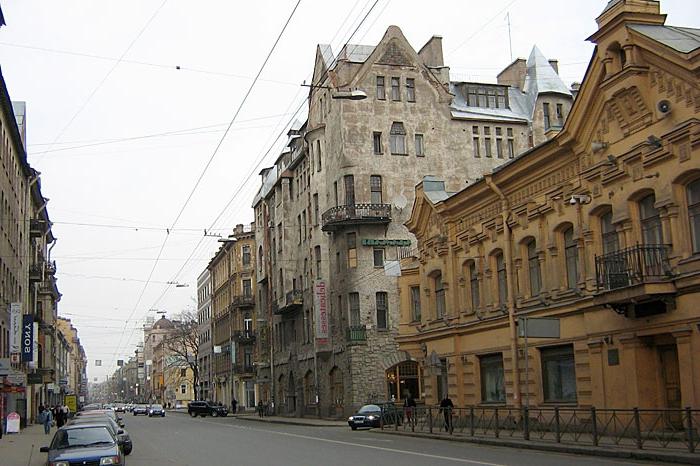One of the most picturesque places in the northern capital of Russia is Sofiyskaya street. Its origin is closely connected with the first railway in Russia. In 1892, with the funds of Baron Korf, the Irinovskaya railway with a narrow gauge was built. She connected St. Petersburg with the suburb of Irinovka, where there was the estate of the above baron. The railway was built to transport peat briquettes from the baron's factory to the city and its environs. These briquettes were used for heating. The Irinovskaya railway began from the Okhta station, passed along Porokhovskaya street, through Zhernovka, Rzhevka and turned into Khristinovka (now Priyutinskaya street). Then the train went to Ryabovo station and to the final destination - Irinovka. In total, there were 34 stations on the route.

A few years later, another station was completed - Vsevolozhskaya. At this station, a wooden house was built (especially for workers and saving the property of the railway). The Vsevolozhskaya station was located on the corner of Vsevolozhsky Avenue (hence its name). But a year later the station building burned down, and it had to be restored. This area was very picturesque and quickly attracted the attention of the city merchants from Myasnaya Street. There was also a good traffic intersection. Irinovka was a 40-minute drive from St. Petersburg, and trains ran often enough (every 20 minutes). This determined the appearance of a new housing estate, which became Sofia street.
The merchants decided to buy land in Irinovka and build there store houses where they wanted to live and trade in the warmer months, and leave for the capital for the winter. The merchants formed Sofia Street, which is now called Vsevolozhsky Avenue. A lot of work has been invested in this process! Sofiyskaya street began from Vsevolozhskaya station and continued in the direction of the Lubya River.

The houses on the street were very close to each other. Here lived such famous merchants of St. Petersburg as Sveshnikov, who had a tavern with billiards, Frolov, Morozov, Tokarev (who built, by the way, the Ampir cinema), Vsevolozhskaya (the lady who kept the pharmacy). Almost every house had shops. In summer, the population of the district increased several times, so at the request of people another pharmacy was opened. All this was on the left side. On the right side, Sofiyskaya street began from the house of the merchant Vsevolozhsky, who rented rooms, he also had a bakery and sausage. Next came the houses of Shteimeyer, Zheldybin. Then there was a teahouse for men, the entrance to which for a woman was considered a sign of bad taste.
Along the street is the house of Pavel Orlov, who sold colonial goods (coffee, tea and others). Next was a beautiful church, at home of the merchant Zemtsov (in one of which was located a zagotkontora). Until today, many houses have been preserved almost intact.
This is the story of the development of the "merchant" street. Sofiyskaya street was clean, almost perfect. On its two sides deep ditches were arranged. The sidewalks, although they were unpaved, were regularly cleaned by special workers. Near the Holy Trinity Church a beautiful bridge was made across the ditch.
Sophia Street (St. Petersburg) is an integral part of the history of the city, as are its monuments and the imperial residence. Feel the spirit of the era, walking through these places!